Are dachshunds hard to potty train
Are dachshunds hard to potty train?
Are dachshunds hard to potty train? Do you have a new puppy dachshund? Do your elderly dog struggle to establish a routine? Do you spend your days cleaning the house of excrement and urine? You’re not by yourself. Potty training can be difficult, particularly for dachshunds, but we’ll help you figure it out.
How can a dachshund be toilet trained? Here’s how:
- Look for indications that your dachshund should be put down.
- Take him out on frequent breaks.
- Proceed to the same location.
- Give him something for urinating and defecating outside.
- Don’t discipline him for mishaps.
Maintain your everyday schedule. - After dark, use a crate.
If you’re tired of stains on your carpet and odors coming from your house because your dachshund hasn’t learned how to poop and wee outside, continue reading to learn how to teach your sausage dog a new habit.
Table of Contents
Are dachshunds hard to potty train?
How do I know my dachshund needs the toilet?
What if my dachshund keeps having accidents indoors?
Should I shout at my dachshund for weeing indoors?
Should I use a crate for potty training my dachshund?
What do I do with my dachshund at night?
Can you potty train an older dachshund?
Should I use puppy pads to toilet train my dachshund?
Should I get an indoor puppy pen for my dachshund?
How do I stop my dachshund weeing when people visit?
What things do I need to potty train my dachshund?
How long will it take to potty train my dachshund?
What if I can’t potty train my dachshund?
Why won’t my dachshund go out in the rain?
Does my dachshund need a coat?
Does my dachshund have a urinary tract infection?
What do I do next?
Note: Research and my own experience as a Dachshund owner of over ten years served as the foundation for this post. I’m not a certified dog behaviorist or veterinarian.
PRIOR TO BEGINNING POTTY TRAINING, IT IS CRUCIAL TO CONSULT YOUR VETERINARIAN: You MUST ask your veterinarian whether it’s okay for your puppy to go outside into your garden or yard before the vaccines are finished before starting this toilet training. It could not be feasible for a variety of reasons. For instance, you might not have a safe and private garden or yard to use, you might live in a climate that is too hot or cold for a young puppy to be outside, you might live in a place where your puppy could contract the deadly canine parvovirus, or you might have too many wild animals or unvaccinated dogs in your home, all of which have the potential to expose your puppy to the virus. Therefore, BEFORE you start potty training your puppy outside, make sure you give your veterinarian a call to confirm that.
Are dachshunds hard to potty train?
Yes, potty training dachshunds may be challenging due to their obstinate nature. Allow enough time so that you can keep an eye on your dachshund and respond promptly when he has to go. Regularly take him outside throughout the day and cage him overnight and while you’re not around for brief periods of time.

Any dog breed can struggle with potty training, so don’t worry too much. After you acquire him, you should try to stay at home for a few weeks. He is less likely to develop a negative habit if you start early. To learn precisely what you need to do, follow the 10-Step Toilet Training Boot Camp below:
1. Keep an eye out for indications
Keep an eye out for indications that your dachshund has to go, like as sniffing, circling, crouching, or sitting near the entrance.
2. Bring your dachshund outdoors.
Cut off your dachshund’s lead and take him outside as soon as he exhibits any symptoms.
3. Select a location
Decide where you want your dachshund to go outdoors and make sure they stay there. He must comprehend his destination.
4. Issue a verbal directive
Every time, give your dachshund the same verbal order. Use a phrase like “wee-wee.” Because it’s less confusing and he won’t be able to tell the difference, use the same command for both “wee” and “poo.”
5. Hold off for ten minutes.
Your dachshund needs ten minutes. Give him a reward and make a big deal out of him if he uses the restroom. Take him back inside and try again after 20 minutes if he doesn’t.
6-Avoid diverting your dachshund’s attention
Wait until your dachshund uses the restroom before playing with him or diverting his attention.
7. Give your dog praise
When your dachshund uses the restroom outside, be really upbeat. We’re discussing anything from sweets to fuss to childish voices!
8. Engage your dachshund in play.
Play outside for a while once your dachshund has completed his assigned task. You want him to think of using the restroom as enjoyable and rewarding.
9. Put your dachshund in a crate.
To avoid indoor mishaps, crate your dachshund (for brief periods of time) both overnight and when you’re not around.
10. Adhere to the schedule
Maintain a boot camp mindset and stick to the schedule! Knowing when to go can make it much easier for your dachshund to urinate on time.
You should still take your dachshund outside on a frequent basis during the day, even if he isn’t exhibiting any symptoms of wanting to go potty. Initially, you should probably take him out around every 20 minutes. This may seem like a lot, but the goal is to reward him for doing the right thing by giving him as many chances as possible to urinate outdoors.
How do I know my dachshund needs the toilet?
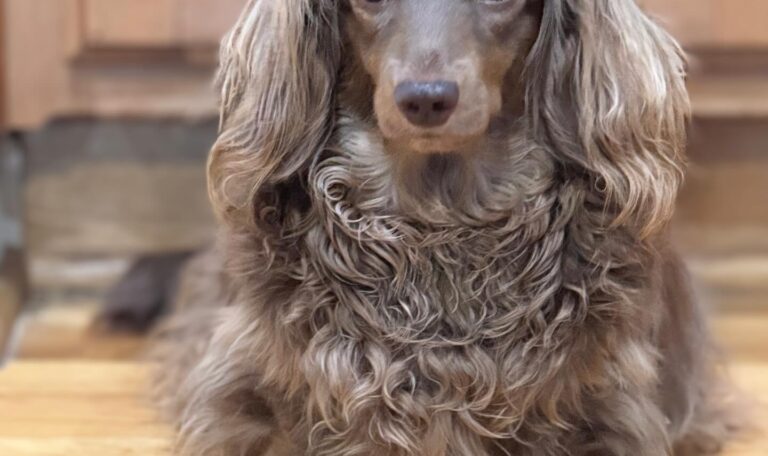
- Detecting Circling
- Squatting
- Rushing around the home or becoming enthusiastic
- lingering in a location where he had already urinated
- Sitting by the door
- Weeping or complaining
- Yapping or barking without cause
- staring at you aimlessly
What if my dachshund keeps having accidents indoors?
You should take the following action if your dachshund frequently has mishaps indoors:
-Return to the fundamentals
-Retrieve your dachshund.
-Smear excrement outside.
-Observe your dachshund closely.
-Get used to the toilet routine.
-Make use of valuable goodies.
-Clean up instead of reacting.
-Don’t worry and keep moving.
Here’s what you should know:
Return to the fundamentals
Your dachshund could be unsure of where he’s meant to go if he continues urinating indoors. Wee and poop inside, poop inside and poop outside, and wee and poop inside are the three types of dachshunds. Resuming the routine and getting back to the basics is the best course of action.
Retrieve your dachshund.
Do not panic if your dachshund is caught mid-squat! Simply say “no,” pick him up right away (even if he’s mid-wee), and lead him outside. His bladder should constrict, and he should stop urinating if you take him up. Treat him if he completes his business outside.
Smear excrement outside.
as repulsive as it sounds. Smear a patch of grass outdoors where you want your dachshund to go with one of his poops. This encourages him to go outside and provides him a fragrance. Every time, go to the same spot. It might be best to cage him for a little period of time when you return and try again in 20 minutes if he doesn’t leave.
Observe your dachshund closely.
You must keep a tight eye on your dachshund when he returns inside if he is not in a crate and does not go outdoors. Go back outside as soon as you notice any indication that he has to go pee. Simply say “No” (don’t yell; just be firm) and escort him back outside if you see him adopting “the position.” It’s a lot of effort, but just until he gets trained.
Get used to the toilet routine.
The toilet pattern will become familiar to you after about a week. For instance, after eating in the morning, your dachshund will need to use the restroom. Take him outdoors and give him ten minutes to wait. Bring him back in and keep a watchful eye on him (or crate him for 20 minutes) if he doesn’t leave, and then try again. He will ultimately HAVE to go, so keep saying this over and over again. It will just take time. This is all you have to do till he learns his proper role. Any attempt to enter “the position” is met with a swift “No” and a return to the outside.
Make use of valuable goodies.
Carrot pieces or store-bought training treats might not be enough to motivate the most food-obsessed dachshunds. Try a high value treat like a little cheese cube or some fresh chicken. Cheese and fatty snacks may be quite effective when trained, but obviously you don’t want to give them all the time!
Avoid reacting.
Don’t react if you see a puddle on the floor but don’t see your dachshund making a mess. He simply won’t comprehend and thus conveys the incorrect message. Only when you witness him exhibiting symptoms that indicate he needs to pee or when he is really urinating on the floor in front of you can you address the behavior.
Clean up instead of reacting.
After any mishaps, give your floors a thorough scrub. Since ammonia and pee have the same smell, you should probably use a particular pet cleaning instead of any products that include it. Your dachshund smelling his own urine or feces and deciding it’s okay to re-go there is the last thing you want.
Avoid worrying.
Your dachshund may sense when you become agitated, nervous, or upset about the situation and become afraid or uncertain about his role. Remain composed, take him out frequently, and follow the schedule.
keep moving.
All puppies initially poop and pee on the ground, and mishaps are likely to occur while your dachshund is still learning. This is really typical. All you have to do is follow the boot camp instructions and keep a close eye on him. Continue taking him out on a regular basis throughout the day, and stick to the schedule. Dachshunds may require some time to learn how to use the potty, so don’t give up.
Should I shout at my dachshund for weeing indoors?
No! Your dachshund should never be yelled at for an inside mishap. They just don’t know what they’re meant to do yet; they’re not attempting to be mischievous. Your dachshund won’t comprehend why you’re yelling at him and will just become afraid of you.
If your dachshund feels the need to conceal in order to use the restroom, you don’t want him to do so since there will be a beautiful, large poop behind the sofa.
Should I use a crate for potty training my dachshund?
Crates are great for toilet training, yes. For dachshunds, a snuggle-den is a place of safety. Additionally, as dogs often don’t sully places where they eat and sleep, your dachshund won’t urinate or defecate there since he sleeps there.
If you’re curious:
The ideal way to use a crate
The benefits of using a container
What safety measures you must take
Which crate size to purchase
How the package should be assembled
Where the crate should be placed
Items to place into the container
How to introduce the crate to your dachshund
If your dachshund starts crying in the kennel, what should you do?
How to handle a dachshund who poos or wees in the crate
How long can you keep your dachshund in its crate?
What to anticipate during the initial evenings
If training in crates is inhumane
The difficulty of crate training
Can you train an elderly dachshund in a crate?
The duration of crate training
What do I do with my dachshund at night?
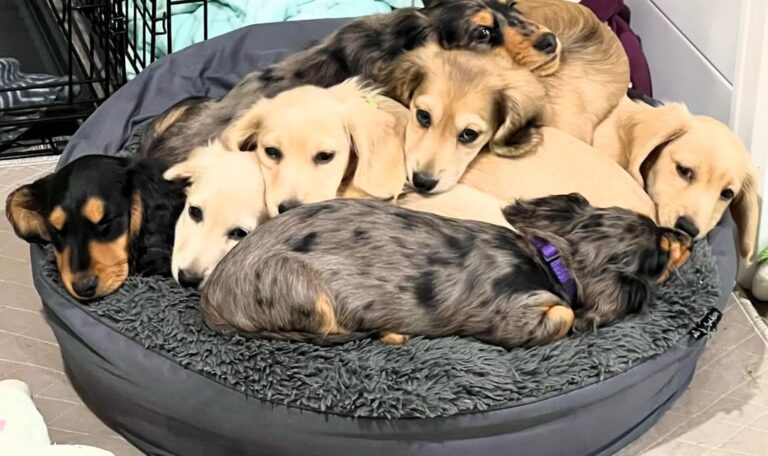 You must wake up at regular intervals during the night to take your puppy outside for the first month or two. Like babies, dachshunds require your attention until they can sleep through the night since their bladders don’t fully mature until they are around four months old.
You must wake up at regular intervals during the night to take your puppy outside for the first month or two. Like babies, dachshunds require your attention until they can sleep through the night since their bladders don’t fully mature until they are around four months old.
What you must do is this:
Get your dachshund out of bed in the middle of the night.
Weeping and pooping indoors throughout the night is common for young puppies. To begin with, their little bladders won’t hold that much water. It is important to keep in mind that if you are crate training, you will need to take him out at night.
Avoid playing with your dachshund at night.
Don’t interact with your dachshund when you’re out with him. Simply pick him up, carry him outdoors, place him on the grass, and utter the words “wee wee.” In the event that he becomes playful, disregard it. He will turn it into a game and keep you up all night if you talk to him, start worrying over him, or make it enjoyable!
Determine the cause of your dachshund’s tears.
To begin with, your dachshund will most likely cry at night as well. That is rather typical. However, you must determine whether he is genuinely in need of leaving, is frightened, or is just trying to get your attention. You can tell when his bladder is empty and when you’re ready for a few hours of sleep if you set your alarm and establish a pattern early on.
Position the crate next to your bed.
To reassure him throughout the night, it is ideal to begin with the crate next to your bed. You may progressively move the container farther away if you’d like over time. Where you want your dachshund to sleep is all that matters. It’s wise to give him some privacy at first. He will ultimately want to go to bed on his own and won’t always want to be in a box.
It could be difficult to begin this nightly ritual. Indeed, you will most likely miss out on sleep. But it’s well worth the rewards. During the initial phases, routine is crucial. Additionally, it is far simpler to teach a puppy new skills when they are young than it is to teach an elderly dog new ones!
Can you potty train an older dachshund?
Potty training an older dachshund can be hard work. Dachshunds are stubborn and tend to be set in their ways. Take him out regularly and crate him (for short periods) when you’re not in the room. Be patient and consistent and allow him time to learn.

You also need to think about any changes that have happened recently. When stressed, some dachshunds do what’s called ‘marking’ where they wee on furniture or areas around the home. They might start doing this after you move house, get another dog or have a baby. Get him back into boot camp and start following the routine again.
He may be going to bed with too much in his bladder if he keeps having accidents during the night. Try taking him outside right before bed, and make sure he eats at least five hours before bed. If you believe it’s a nervous issue, you can have him sleep in a crate, which should make him feel safer and prevent accidents.
It’s best to take precautions with older dogs and speak to a vet to rule out any serious problems. If all is ok and it’s just an age thing, you could try some dachshund diapers.
Should I use puppy pads to toilet train my dachshund?
No. Although using puppy pads can seem like the simple solution, it will become a very difficult habit to overcome. It may offer you a few more hours sleep in the early days, but it’s incredibly confusing for a dachshund and will make potty training much tougher in the long term.
Should I get an indoor puppy pen for my dachshund?
Indeed. Because it limits your puppy to a certain area of the house, a puppy enclosure is helpful. It’s a lot bigger room where your puppy can run around and play. Even with puppy enclosures, you still need to keep an eye on your dachshund and take him out on a regular basis.
Puppy pens or playpens are different to crates. A crate is a confined space used for short periods of time and overnight (with regular trips outside). A puppy pen is good because it’s bigger and can be used for longer. But, there’s a downside. Because the space is no longer confined, the puppy will wee and poo there. And it’s going to take double effort for your dachshund to get the hang of toilet training if you leave him for hours on end. Puppy pens work best alongside the 10-Step Toilet Training Boot Camp.
How do I stop my dachshund weeing when people visit?
The best thing you can do is train your friends and family. It’s much easier than trying to contain a giddy dachshund pup! Tell them he’s potty training and they need to be calm and ignore him when they first arrive – just for a short while until he settles down. The less fuss at the door, the less wee at the door!
If you’re expecting company, make sure you take him out immediately before they come. His excessive enthusiasm will be lessened as a result, preventing him from urinating on the floor, stepping in it, jumping all around, and getting it on everyone and everything!
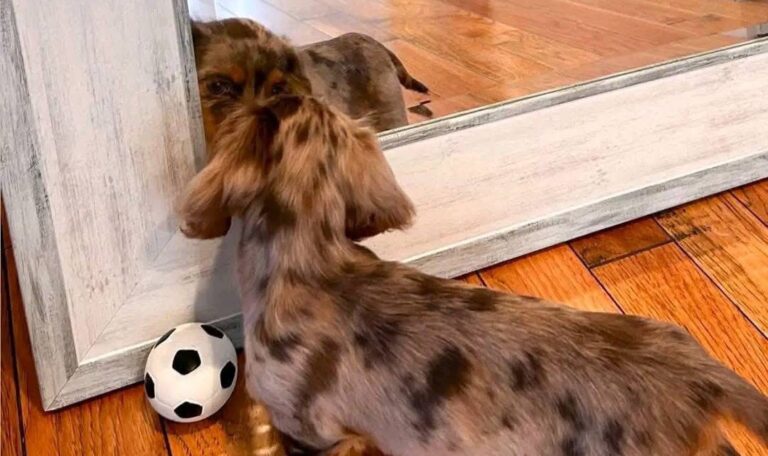
What things do I need to potty train my dachshund?
To toilet train your dachshund, you’ll need the following:
- Collar and lead
- Treats
- Crate
- Puppy pen
- Time and patience
Here’s what you should know:
Collar and lead: This will allow you to take him outside to the same location.
Treats: Carrots and mangos are nutritious and delicious raw foods that dachshunds like.
Crate: Simply ensure that the crate is large enough for your dachshund to sit and stand comfortably.
Puppy pen: If you wish to first limit your puppy to a single part of the house, this might be helpful.
Time and patience: It may take some time for dachshunds to learn to use the bathroom, so be patient.
How long will it take to potty train my dachshund?
Typically, toilet training a dachshund takes three weeks to three months. The speed at which your dachshund picks things up and the consistency of your training will determine this. Due to their obstinate nature, dachshunds require patience and a willingness to put in the necessary time.
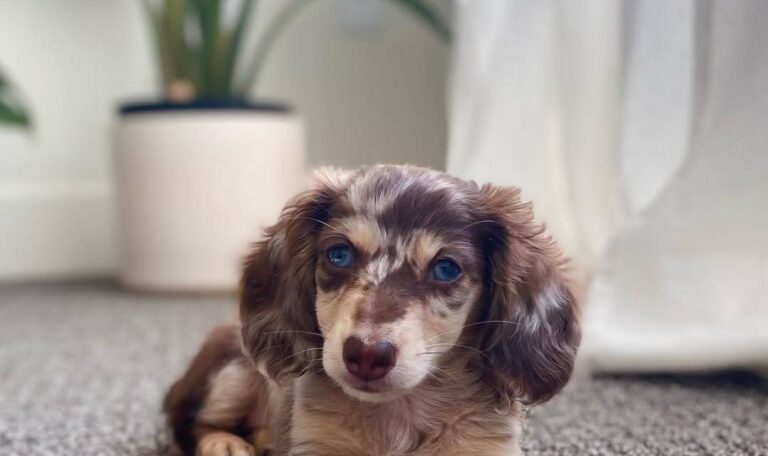
Your progress will be hindered if you just sometimes workout or alter your regimen or strategy. A well-trained sausage pup is the result of patience, commitment, and consistency!
What if I can’t potty train my dachshund?
Here’s what to do if your dachshund is struggling with toilet training:
- Follow the routine.
- Track toilet habits
- Check you’re not overfeeding
- Control when your dachshund goes outside
- Do some general puppy training
- Don’t be too hard on yourself
- Speak to a vet
Here’s what you should
Follow the routine.
There are a lot of reasons why things don’t always go as planned. Put even more effort into your regimen. Puppies often need to poop within 15 to 20 minutes of feeding and pee as soon as they wake up. You must thus rise and leave at the break of day. No justifications! know:
Keep track of your potty habits.
Keep track of all the times your dog goes in a week and record them. You may then modify your potty-training timetable to accommodate his toilet habits if you begin to see trends. The majority of pups require urination every one to two hours during the day. Your dog won’t be able to handle it if you leave him alone for an extended period of time. And he is not to blame for it. He has more opportunities to learn what he’s meant to do the more you take him out.
Make sure you aren’t overfeeding.
Examine the food and quantity you are giving him. It’s possible that you are either overfeeding or not feeding at the appropriate time of day. Be careful not to give him human food as well. In addition to being unhealthy, anything very salty will cause him to drink more and urinate more.
Regulate when your dachshund leaves the house.
Don’t let your sausage dog to wander about the garden unattended until he is potty trained. This is not going to work. He won’t know where to use the restroom, what to do, or when to do it. Until he learns the ropes, he needs regularity and order.
Practice general puppy training.
Take him to puppy training classes or devote extra time to general puppy training. He must realize that you are the “alpha” and in command. He won’t listen to you or do whatever you want him to do if he’s controlling the household and getting away with it!
Be kind with yourself.
You’re certainly not the only person who never successfully toilet trains their dachshund. When they feel like it, dachshunds may be incredibly stubborn and intractable. It’s not your fault; it’s just their nature!
Consult a veterinarian
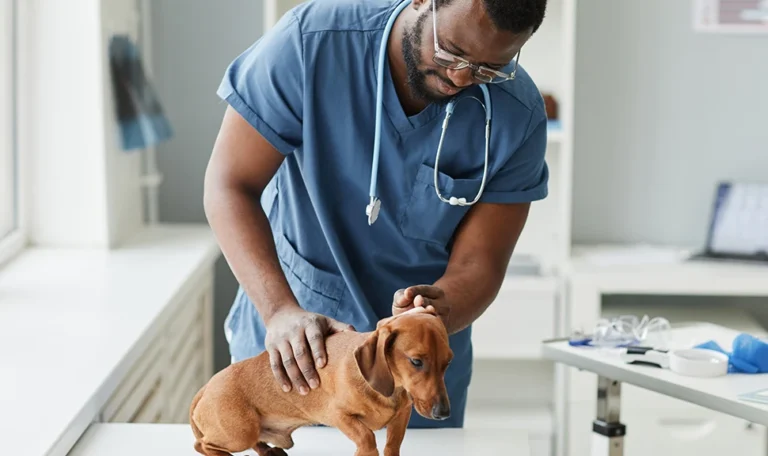
To rule out any significant health concerns, especially if you purchased your dachshund online from an unregistered breeder, consult a veterinarian if he has diarrhea or if you are at all concerned.
Why won’t my dachshund go out in the rain?
Dachshunds detest rain and cold. They become chilly easily because their stomachs are low to the ground. If you give your intelligent and obstinate dachshund the option of weeing outside on moist grass or within, he will much sooner poop by the door.
Take immediate action to stop that. Put on your wellies and join him outside. It should be lot more enjoyable as a result (for him, not you!). If not, take him up, gently place him on the grass, and wait; he will ultimately understand!
Does my dachshund need a coat?
Although they are helpful in cold and rainy weather, dachshunds do not require coats. You may purchase him a thick fleece for winter hikes and a jacket to keep him dry in the rain. Dachshunds appear to adore them, and their owners are big fans of fleeces.
Does my dachshund have a urinary tract infection?
Weeping in the home is typically a sign that your dachshund is still learning. However, a medical issue such as a urinary tract infection (UTI) may also be the reason. You should take your dachshund to the veterinarian if he appears to be weeing compulsively and continuously. Don’t worry too much; UTIs are usually rather straightforward to cure. Just schedule a visit with your veterinarian as soon as possible.
It’s time to enroll your dachshund in “Toilet Training Boot Camp” now that you know what to do! Don’t give up if he doesn’t take it up immediately. All he’s doing is figuring out what you want him to do. Both parties will need to put in time and effort. So, show him you’ve got his back and give him the direction he needs!
What do I do next?
If you’re the type of person who reads this post through to the end, I’d LOVE for you to tell your friends and family about our website. I really appreciate your support of my site, so please share this information below if it was useful to you. I’m grateful.

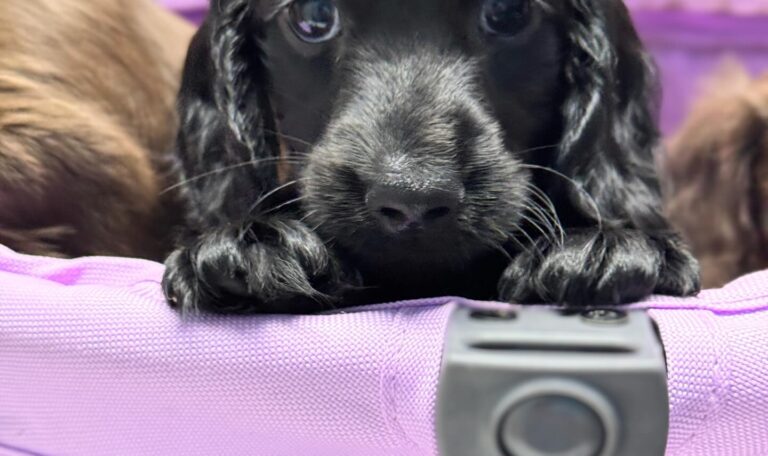
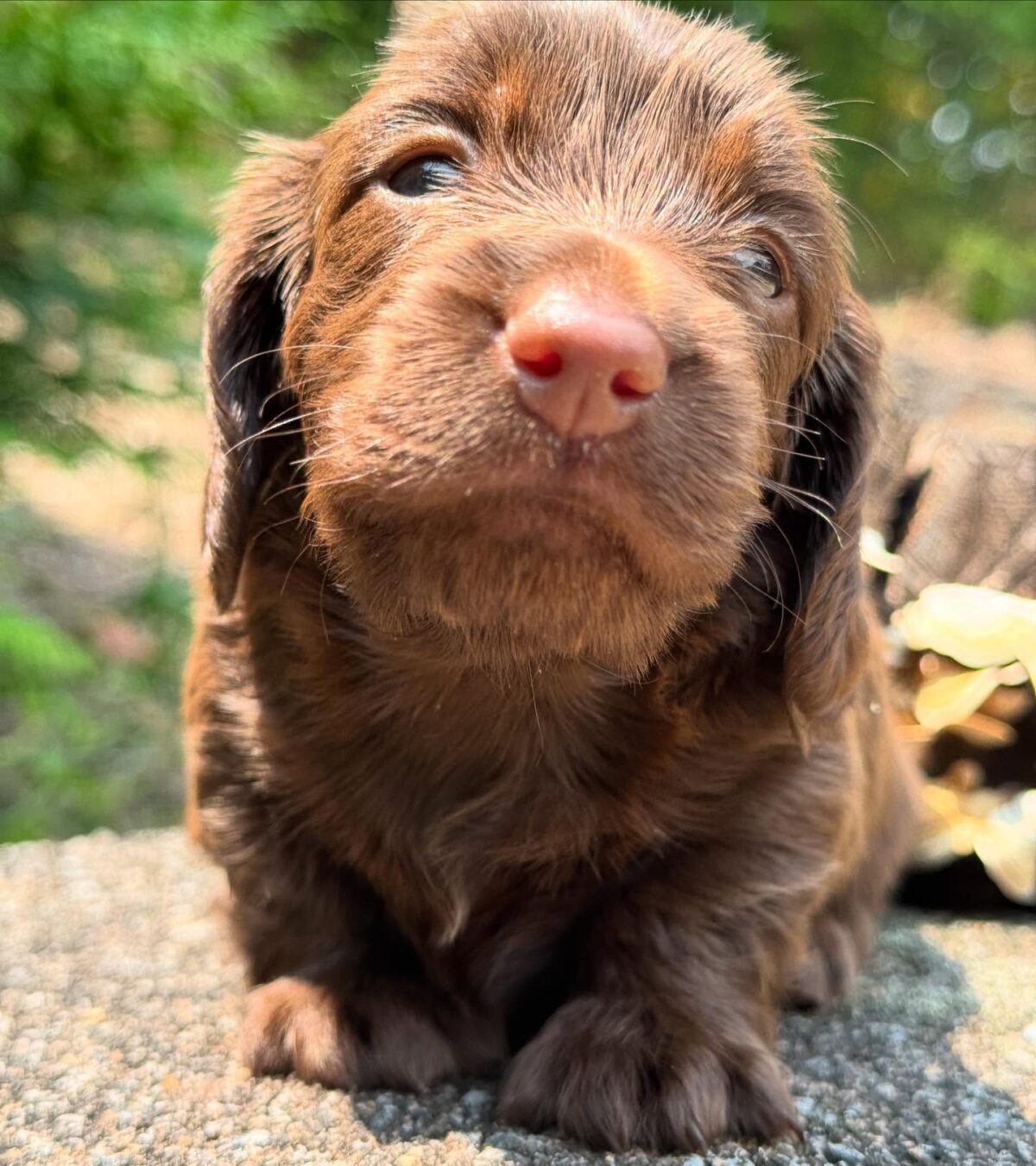
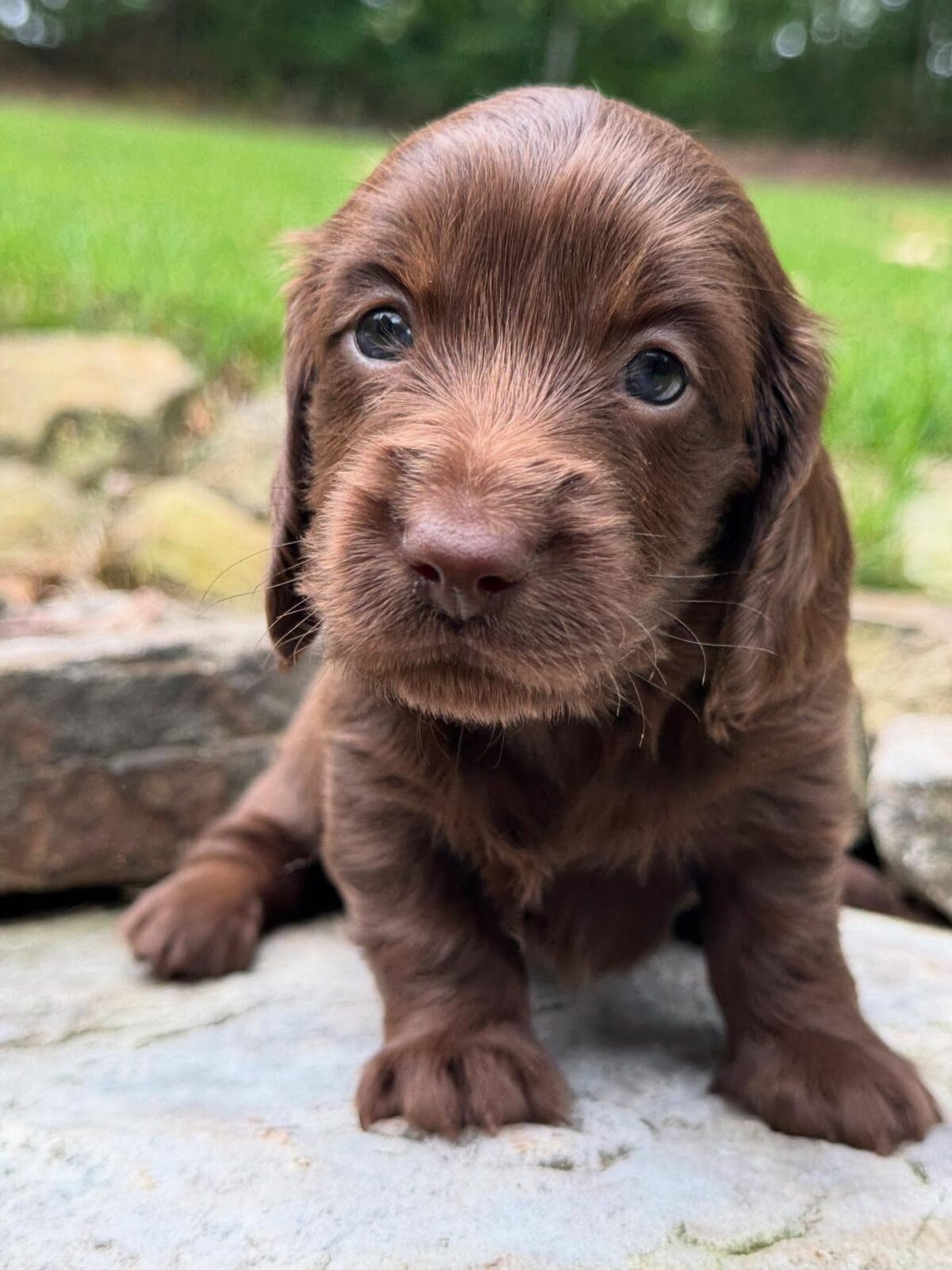
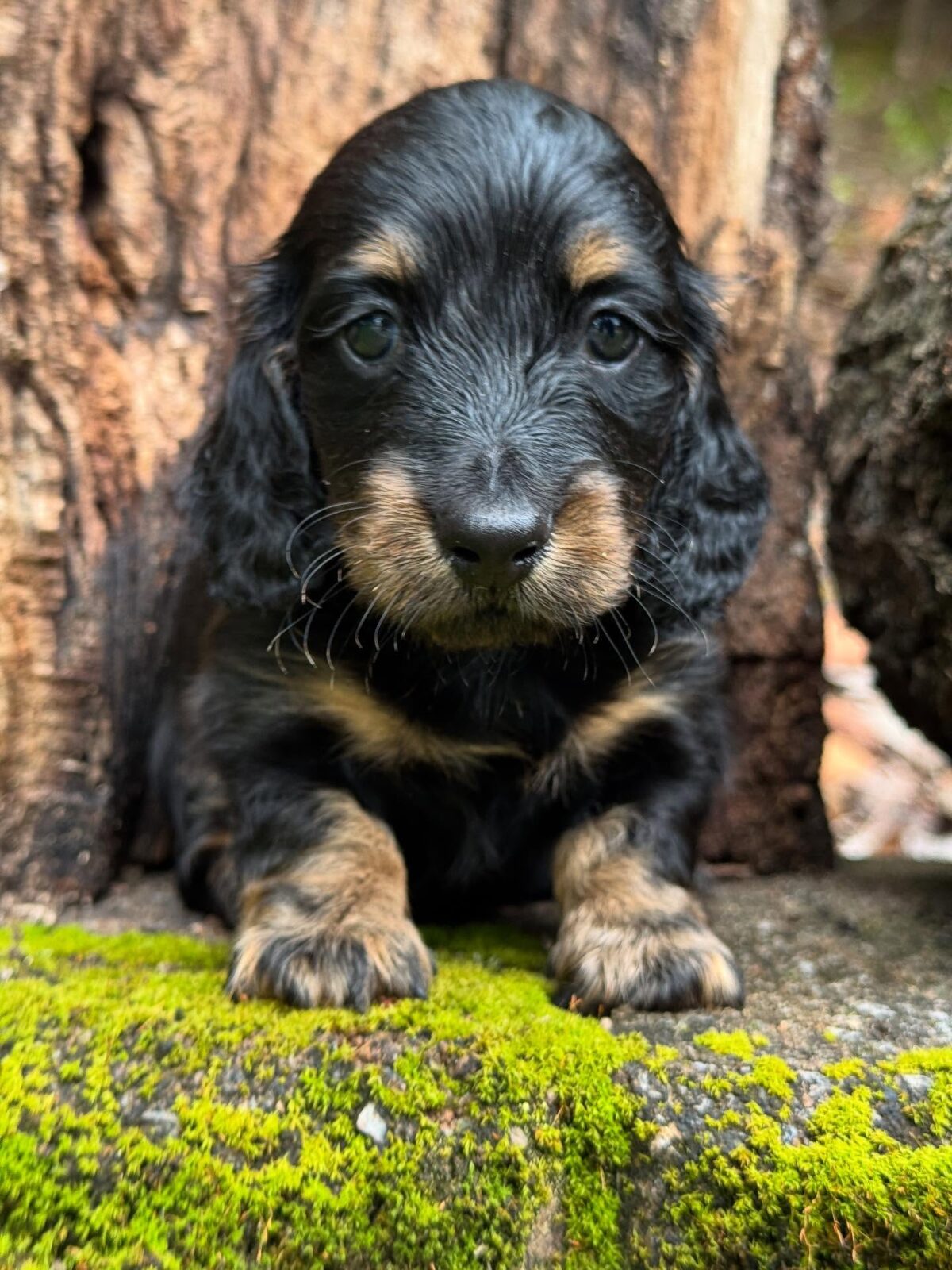
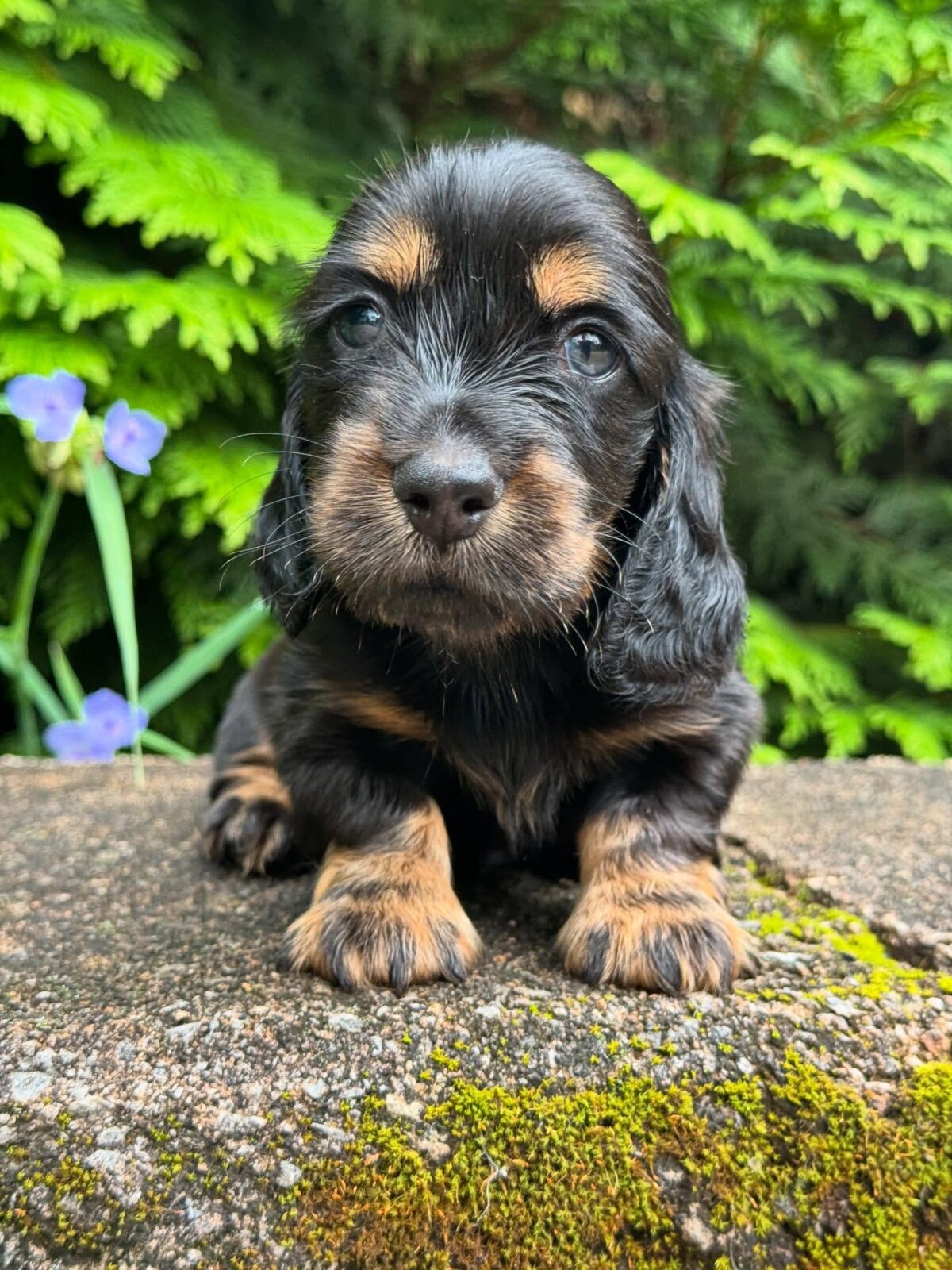
Comments are closed.